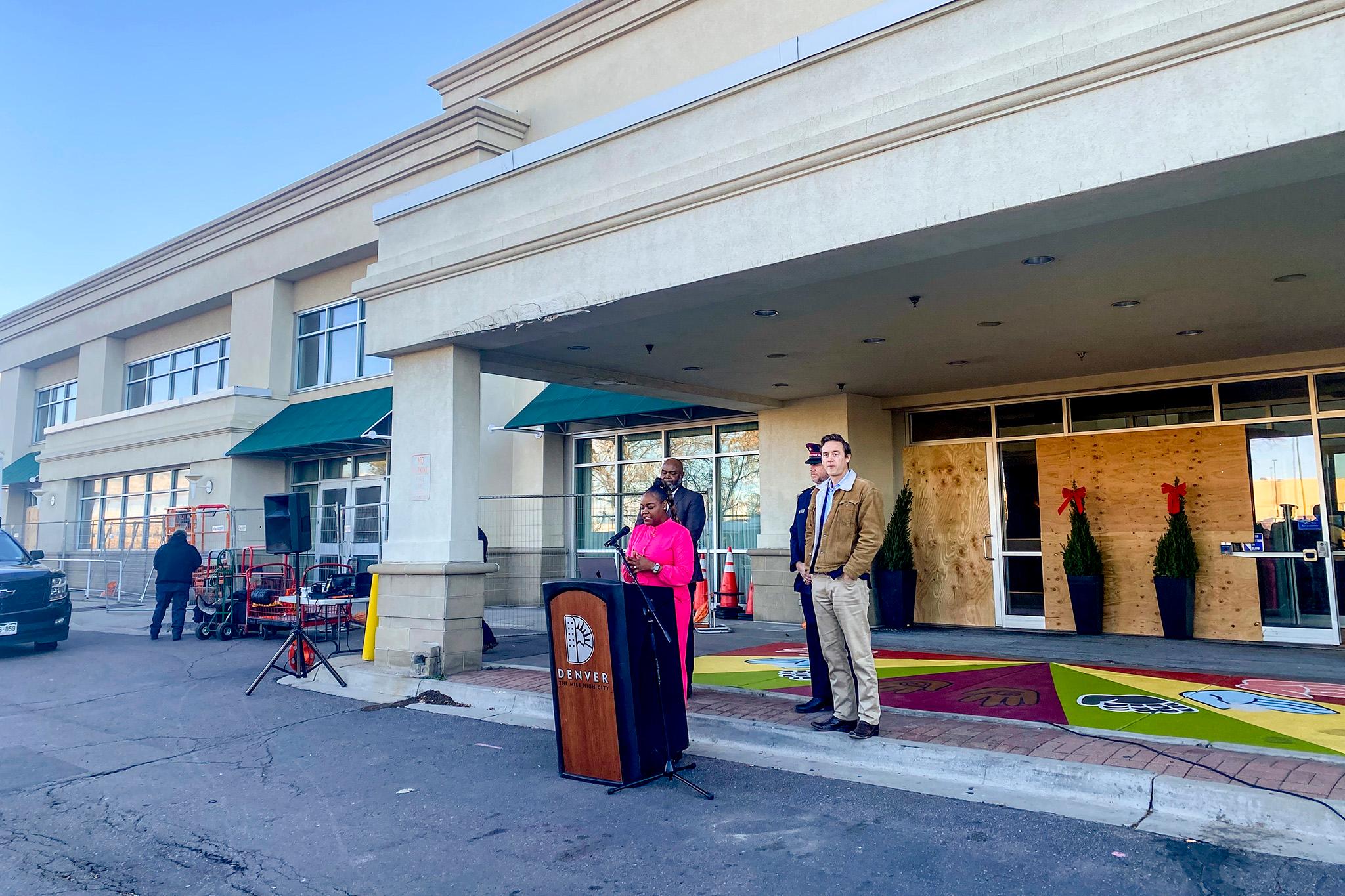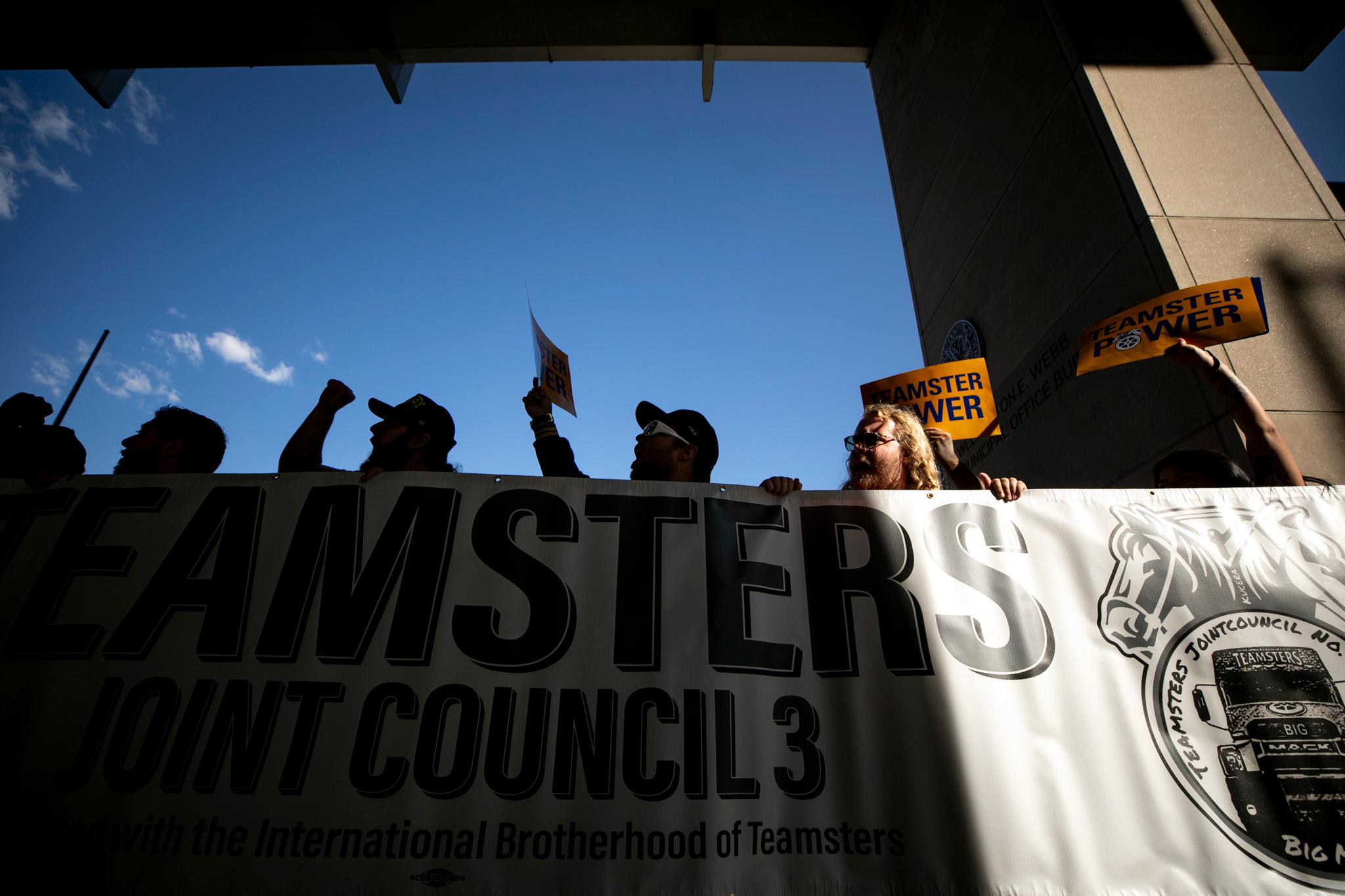When Denver Mayor Mike Johnston took office and pledged to house 1,000 people from the streets by Dec. 31, he said the city would be building shelters and microcommunities in every City Council district.
Yet with weeks left in the year, three City Council districts -- 2, 5 and 6 -- still lack any city-funded facilities for unhoused people struggling to survive on the streets.
District 9, historically the hub of social services in Downtown and Five Points, has 1,121 -- just over a quarter -- of the city-funded shelter beds or rooms.
And nearly half of the city-funded shelter beds and units are in District 8, mostly in or on the border of Northeast Park Hill: a total of 2,103, including some in the process of opening.
So why has District 8 become such a magnet for shelters?
Johnston has been working to boost the downtown economy after the pandemic. Part of that is getting rid of visible encampments, moving people indoors, and trying to take some of the pressure from Denver's homelessness response away from the city center.
Meanwhile, District 8 has buildings to use.
"District 8 includes the footprint of Denver's former airport and its remaining un- and under-utilized hotels," explained Department of Housing Stability spokesperson Derek Woodbury.
Many hotel and motel owners, finding themselves stranded in an industrial area instead of serving Stapleton Airport tourists, have been ready to sell, and are finding an eager buyer in the city.
"These properties are one of the fastest ways for us to bring people inside to non-congregate shelter," Woodbury said.

The concentration of shelters in District 8 didn't start with Johnston.
The contracts for the recently acquired District 8 hotels for House1000, including the Doubletree and the Best Western, were signed under his leadership. The purchases will cost the city tens of millions of dollars.
The Department of Housing Stability started working on those deals under former mayor Michael Hancock, HOST spokesperson Sabrina Allie told Denverite. Johnston sped up the acquisition and opening of shelters in these facilities by the end of the year to meet his House1000 goal.
The two big homeless group homeless shelters in Northeast Park Hill, one run by the Denver Rescue Mission and the other by Catholic Charities, were also Hancock-era projects.
The multiple microcommunity sites planned for the district, Johnston-era projects, are expected to begin opening in the coming weeks.

How has the District 8 community responded to the expansion of shelters?
At community meetings, residents have raised concerns that they are shouldering a disproportionate share of the homelessness response and that poverty is being concentrated in their long underserved and disenfranchised community.
Others have expressed their fears that crime will rise and that a neighborhood, already struggling with divestment, will decline.
When District 8 Councilmember Shontel Lewis first learned how many shelters were opening in her community, she expressed concern to the mayor about "the lack of consideration of the context of the neighborhood."
After all, Northeast Park Hill is the last plurality-Black neighborhood in the city with a disproportionate number of people of color. It's just under 26% white and has a median income of $58,524. Northeast Park Hill has long been a food desert and has not seen the same sort of investments Central Park, just across Quebec Blvd., has enjoyed since the closure of the airport.
Lewis worried the city is just concentrating poverty.
"I don't think that is a strategy that we should be utilizing to get folks housed," she said.
Lewis is not alone. Recently, District 11 Councilmember Stacie Gilmore resigned as president of the Safety, Housing, Education and Homelessness Committee, frustrated by the Johnston administration "consolidating poverty" in Northeast Denver. She will continue to serve on the committee, focusing all of her efforts on representing her district.

Lewis told Denverite she appreciates the mayor has a vision, even if she doesn't fully share it.
She'd prefer the city use a social housing model to address homelessness and plans to push for that in the coming years.
Even so, Lewis is eager to work with the mayor on his fix, and she's proud of the number of people who have been sheltered in District 8.
"We've done our part," she said. "Where I am hopeful and really excited about is seeing other council members find sites within their communities for the micro communities."
She praised Councilmember Diana Romero Campbell for facilitating the arrival of more than 200 units opening in District 4.
"It's the first ever in her district, in District 4," Lewis said. "I'm really excited to see that kind of leadership and momentum to get folks sheltered."
Lewis sees the increase in shelters in District 8 as a model for the city, and she wants to use the shelters in her community as proof that housing helps address other issues people often associate with homelessness: crime, mental health struggles and drug use.
Instead of waiting for the city to fund research into housing outcomes to her satisfaction, she has used her own office's money to partner with the social-service-minded real-estate tech company B-Konnected to fund data collection about the health outcomes of shelters in her community -- a practice she hopes the mayor embraces.
"As we look at 2023 and even 2024, what I'm most concerned about is not how many people we get housed, but how many people are actually staying in that housing," Lewis said. "For me, that's a more important number."

In the coming days, the mayor's office plans to release an updated dashboard where it will share some data about how long people brought inside actually stay.
As the city continues to invest in shelter plans in District 8 and beyond, Lewis hopes the administration also considers making other investments in Northeast Park Hill.
"We have to be intentional that we're not just investing in infrastructure like shelters, or converting hotels into micro units, but that we're also investing in parks, in infrastructure, in a diverse array of housing and not just low income housing," Lewis said.
And those investments should be spread throughout District 8.

She looks across Quebec St. to Central Park, where the city intentionally planned a live-work-play walkable community, and she sees possibility for that in Park Hill, Montbello and East Colfax as well.
"What we should be doing is investing heavily in communities in which we have extracted and not intentionally invested in the infrastructure and the well being of the individuals," she said.











